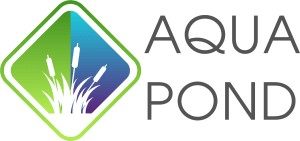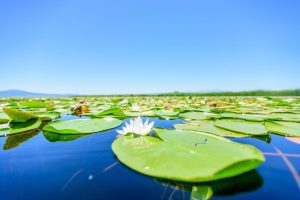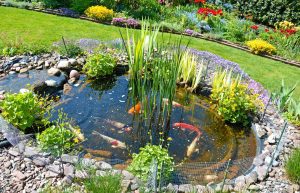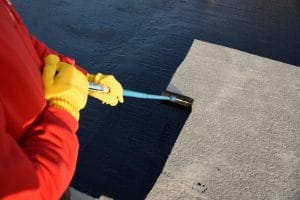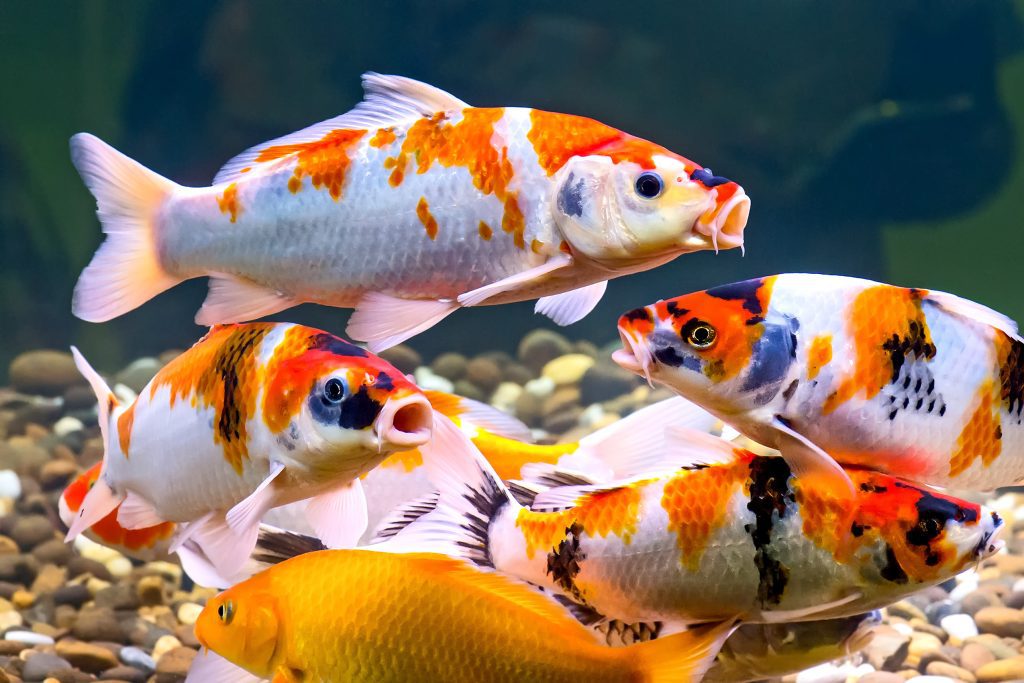
Enhance your Koi Pond's water quality with Lacto Bacteria! Explore benefits and tips for a thriving aquatic ecosystem. Click now!
Lacto bacteria play an important role in maintaining a healthy environment for koi in ponds.
By introducing beneficial bacteria, pond owners can enhance the balance of the ecosystem, which leads to improved fish health and vitality.
Fish can benefit from these probiotics by gaining better immunity and reducing the risks of disease that often arise from suboptimal water conditions.

Understanding how lacto bacteria work involves recognising their ability to break down organic waste and compete with harmful bacteria.
This natural process not only helps in keeping the pond clean but also supports robust biological filtration.
Koi keepers who utilise products like Nijo Lacto Remedy or Bactoplus can see significant improvements in water quality and overall fish wellbeing.
Maintaining the right water parameters is crucial for optimal bacteria growth and the health of koi. When balanced properly, these probiotics contribute to a thriving aquatic environment where koi can flourish.
Engaging with this topic can lead to more vibrant, resilient koi and a healthier pond ecosystem overall.
Key Takeaways
- Lacto bacteria enhance the health and immunity of koi in ponds.
- They aid in breaking down organic waste and maintaining water quality.
- Proper application of these products supports overall pond balance.
Understanding Lacto Bacteria in Koi Ponds
Lacto bacteria play a crucial role in maintaining the health of koi ponds. They impact both water quality and the koi’s immune system. Here’s a closer look at how these beneficial bacteria contribute to a healthy pond environment.
Role of Lactic Acid Bacteria
Lactic acid bacteria (LAB) thrive in the pond environment. They break down organic waste, such as leftover fish food and dead plant material.
This process helps reduce harmful substances that can adversely affect koi.
By producing enzymes, these bacteria convert proteins and peptides into simpler compounds. This breakdown is essential for maintaining water clarity and quality.
LAB also competes against harmful bacteria, which can lead to diseases in fish.
As they multiply, they create a healthier microbial balance in the pond.
Impact on Pond Water Quality
The presence of lactic acid bacteria significantly enhances pond water quality.
By decomposing organic material, they prevent toxic build-up, which can lead to poor water conditions.
Cleaner water supports greater oxygen levels, promoting fish health.
Additionally, LAB contribute to stabilising pH levels, which is vital for koi.
The competition between LAB and harmful bacteria lowers the chances of disease outbreaks.
A balanced microbial community results in clearer, healthier pond water, essential for koi wellbeing.
Interaction with Koi Immune System
Lactic acid bacteria support the immune system of koi. By introducing beneficial microbes into the pond, they help boost the koi’s natural defence mechanisms.
LAB can stimulate mucosal immunity, which protects koi from pathogens.
Furthermore, regular exposure to LAB can lead to healthier fish with better growth rates.
Stronger koi are more resilient against environmental stressors and diseases.
This interaction highlights the importance of maintaining a proper balance of beneficial bacteria in koi ponds.
The Science of Probiotics for Koi Health
Probiotics play a crucial role in supporting koi health by enhancing their digestive systems and promoting overall wellbeing.
Specifically, lacto remedies utilise beneficial bacteria to create positive changes within koi ponds.
Mechanisms of Probiotics
Probiotics, particularly lactic acid bacteria, work through several key mechanisms to promote koi health.
They help balance gut microbiota by crowding out harmful bacteria. This process reduces the risk of infections and diseases.
Moreover, the beneficial components in probiotics aid in breaking down food, improving nutrient absorption.
This leads to healthier growth and better koi vitality.
Probiotics also enhance the immune response, helping koi to fight off environmental stresses and pathogens effectively.
Thus, the inclusion of probiotics in koi diets can establish a healthier digestive environment, ensuring koi remain strong and resilient.
Benefits of Lacto Remedies
Lacto remedies offer numerous benefits to koi in ponds.
These probiotics help maintain water quality by breaking down organic waste and reducing harmful substances. As a result, koi live in a healthier aquatic environment.
Using lacto-based probiotics can lead to improved digestion and nutrient uptake, which is essential for fish health.
Healthy koi exhibit vibrant colours, increased energy, and enhanced growth rates.
Additionally, regular use can reduce the need for antibiotics, as koi become less susceptible to disease.
By supporting natural defence mechanisms, lacto remedies contribute to long-term koi health and stability in the pond ecosystem.
Preventing and Treating Fish Disease

Maintaining the health of koi is crucial for preventing disease. Effective treatments can address various infections, including bacterial and fungal. Understanding these areas helps ensure koi thrive in their environment.
Combatting Bacterial Infections
Bacterial infections are a common threat in koi ponds. These infections often arise from poor water quality or stress.
Signs of infection may include lethargy, visible lesions, or fin rot.
To combat these infections, one effective treatment is the use of probiotics such as Nijo Lacto Remedy.
This product introduces beneficial bacteria that compete with harmful strains. Additionally, keeping the water clean and well-oxygenated further reduces bacterial growth.
Regular monitoring of water parameters, including ammonia and nitrite levels, is vital.
Implementing regular water changes can also help in maintaining a healthy environment, which aids in disease prevention.
Addressing Fungal Infections
Fungal infections can occur when koi experience stress or have injuries. These infections often present as white patches on the skin or fins. Immediate attention is essential to prevent further complications.
Using antifungal treatments can help.
One option is the Bactoplus Lacto Health, which supports the immune system and prevents fungal outbreaks.
It is available in different sizes to suit pond needs.
To prevent fungal infections, regular pond maintenance is essential.
Ensuring proper filtration and avoiding overcrowding can minimise stress on the fish. Also, treating any wounds promptly can help prevent fungal entry, reducing the risk of infection.
Healing and Recovery
Recovery from disease involves both treatment and care. Following bacterial or fungal issues, koi may take time to heal. Providing a stress-free environment is key for faster healing.
During recovery, it’s critical to maintain optimal water quality. Regular testing and adjustments will ensure a safe space for healing.
Additionally, consider using water treatments that promote healing and reduce inflammation.
Monitor for signs of scar tissue formation, which can occur in severe cases.
Maintaining good water conditions helps limit the severity of injuries. By using probiotics like those mentioned earlier, koi can regain their health and vitality more efficiently.
Water Parameters and Bacterial Balance

Maintaining the right water parameters is vital for creating a conducive environment for beneficial bacteria in koi ponds.
Water temperature, pH levels, and ammonium content are key factors that significantly affect bacterial growth and pond health.
Temperature’s Effect on Bacteria
The water temperature in a koi pond plays a crucial role in bacterial activity.
Ideal temperatures for beneficial bacteria generally range between 18°C to 24°C.
Within this range, bacteria are most effective at breaking down organic matter and maintaining water quality.
When temperatures drop below 10°C, bacterial activity slows down, reducing their efficiency in processing waste.
Conversely, temperatures above 30°C can lead to harmful conditions, promoting the growth of pathogenic bacteria.
Regular checks on pond water temperature will help ensure bacteria can thrive, supporting a healthy ecosystem in the koi pond.
Monitoring pH and Ammonium Levels
pH levels are another critical factor in the bacterial balance within a koi pond.
The optimal pH range for koi and beneficial bacteria typically lies between 6.5 and 8.5.
If pH levels fall too low or rise too high, it can stress both koi and bacteria, leading to poor water quality.
Ammonium levels are interconnected with pH; higher pH levels can increase toxicity.
Ammonia and nitrite should be monitored closely, as high concentrations can harm fish health.
Regular testing with appropriate tools will help identify issues early.
Keeping pH and ammonium levels stable promotes a thriving environment for beneficial bacteria and ensures the health of the koi.
Koi Pond Maintenance Essentials
Maintaining a koi pond requires regular attention to ensure a healthy environment for the fish. Key aspects include implementing effective treatment protocols and utilising specialised equipment to improve water quality.
Regular Dosage and Treatment Protocols
To keep the koi pond in optimal condition, proper dosage of treatments like Lacto Remedy is essential.
This product contains beneficial lactic acid bacteria that help break down organic waste and reduce harmful bacteria.
Dosage guidelines are as follows:
- Initial Treatment: Start with a higher dosage to kick-start the process.
- Maintenance Dose: Follow up with a lower, regular dosage to maintain a balanced environment.
It is important to monitor water quality regularly.
Conduct tests for ammonia, nitrite, and nitrate levels. Adjust the treatment frequency based on these readings.
Regular usage of Lacto Remedy can enhance fish health and reduce disease risks, promoting a thriving pond ecosystem.
Utilising Ozone Equipment
Ozone equipment serves an important function in enhancing water quality within koi ponds.
Ozone acts as a powerful oxidiser and can effectively remove harmful substances, including bacteria and organic waste.
Benefits of using ozone equipment include:
- Improved Water Clarity: Ozone helps to break down suspended particles, leading to clearer water.
- Enhanced Oxygen Levels: The process increases the amount of dissolved oxygen, promoting fish vitality.
It is crucial to follow manufacturer guidelines for dosage and operation.
Proper regulation of ozone levels is necessary to prevent stress on the koi.
By integrating ozone equipment into regular maintenance, pond owners can create a safer and healthier environment for their fish.
Breaking Down Organic Waste
Organic waste in koi ponds consists of fish waste, uneaten food, and fallen leaves. Efficient breakdown of this waste is essential for maintaining water quality and supporting beneficial bacteria.
Two critical aspects of this process are enzymatic activity and managing algae growth.
Enzymatic Activity in Ponds
Enzymes play a crucial role in breaking down organic waste in koi ponds. They facilitate the breakdown of proteins and complex organic molecules into simpler components.
This process not only reduces waste but also converts it into nutrients that can be used by other organisms in the pond ecosystem.
Beneficial bacteria, including Nitrosomonas and Nitrobacter, aid in this enzymatic action. They thrive in specific temperature ranges, optimally functioning around 8°C.
Regular addition of these bacteria can significantly enhance the biological activity within the pond. This creates a balanced environment where waste is efficiently managed.
Controlling Algae Growth
Effective management of organic waste is key to controlling algae growth in koi ponds. Algae thrive in nutrient-rich environments, often resulting from excess organic matter.
When waste breaks down properly, it limits the nutrients available for algae, thus reducing their growth.
Implementing beneficial bacteria helps to keep the nutrient levels balanced, creating conditions that discourage algae blooms.
By promoting a healthy ecosystem, koi enthusiasts can enjoy clearer water and healthier fish.
Regular monitoring and maintenance are vital for sustaining this balance and preventing algae overgrowth.
Nutritional Elements in Lacto Products
Lacto products offer vital nutritional components that support fish health. These products contain essential amino acids, minerals, and vitamins that enhance the overall well-being of koi.
Provision of Essential Amino Acids
Essential amino acids are crucial for koi development and health. Lacto products, such as Bactoplus Lacto Health, supply these amino acids, which fish cannot produce on their own.
Key amino acids include:
- Lysine: Important for growth and tissue repair.
- Methionine: Supports metabolism and plays a role in antioxidant defence.
- Threonine: Necessary for protein synthesis and immune function.
The presence of these amino acids helps koi maintain strong muscles, healthy skin, and overall vitality.
When incorporated into feeding regimens, these products enhance growth rates and disease resistance.
Incorporation of Minerals and Vitamins
Lacto products also contain important minerals and vitamins that contribute to the health of koi. Minerals like calcium and magnesium support bone development and metabolic functions.
Vitamins such as:
- Vitamin A: Essential for vision and immune response.
- Vitamin C: Aids in collagen formation and enhances fish resilience against stress.
Trace elements found in Lacto products also play a key role in supporting enzymatic processes.
The combination of these nutrients promotes improved digestion, enhances energy utilisation, and ensures that koi thrive in their aquatic environments.
Regular use of these products maximises the nutritional intake of koi, contributing to their long-term health.
Optimising Biological Filtration
Effective biological filtration is essential for maintaining a healthy koi pond. Beneficial bacteria play a crucial role in breaking down harmful substances, while proper management of filtration systems ensures optimal functioning. Understanding these concepts can significantly enhance pond health and water quality.
Role of Beneficial Bacteria
Beneficial bacteria are vital for the biological filtration process in koi ponds. They convert toxic ammonia, produced by fish waste, into nitrites and then into less harmful nitrates through a process called nitrification.
This transformation reduces the risk of ammonia poisoning, which can be deadly for fish.
To optimise this process, a variety of bacteria species should be present. Common examples include Nitrosomonas and Nitrobacter.
These species help to establish a healthy ecosystem within the pond. Adding commercial products, such as Lacto Bacillis Bacterial Treatment, can introduce or boost these beneficial bacteria, promoting better filtration and water clarity.
Managing Pond Filtration Systems
Managing a pond’s filtration system is key to ensuring it operates efficiently. Regular maintenance checks are necessary to keep the biological filter in good condition.
This includes cleaning the filter media, but care must be taken not to disrupt the bacterial colonies that reside there.
Using a biological filter that has a larger surface area for bacteria to colonise can enhance efficiency. This is because a greater surface area increases the potential for bacteria to break down ammonia.
Routine testing of water parameters, such as ammonia, nitrite, and nitrate levels, helps monitor the effectiveness of the filtration system and indicates when adjustments are needed.
Proper Application of Lacto Remedies
Applying lacto remedies correctly ensures optimal results in koi ponds. Factors such as dosage and the method of mixing can significantly affect the effectiveness of the treatment.
Effective Dosage for Different Pond Volumes
The dosage of lacto remedy varies according to the volume of water in the pond. For a pond containing 20,000 litres of water, he should use approximately 1 litre of the remedy.
This amount helps to introduce the beneficial bacteria effectively.
To calculate the dosage for ponds of varying sizes, he can use this simple guideline: for every 20,000 litres, use 1 litre of lacto remedy.
| Pond Volume (litres) | Dosage (litres) |
|---|---|
| 10,000 | 0.5 |
| 20,000 | 1.0 |
| 30,000 | 1.5 |
Accurate dosing is essential to prevent overuse, which could disrupt the pond’s ecosystem.
Mixing with Warm Tap Water
To activate the enzymes in the lacto remedy, it is best to mix it with warm tap water before adding it to the pond. Warm water helps in better dispersion of the product and activates the beneficial microorganisms more quickly.
He should avoid using boiling water, as this can destroy the delicate bacteria. Ideally, the water should be around 20-30°C.
The mixing process should be done carefully:
- Measure the required amount of warm tap water.
- Add the corresponding dosage of lacto remedy.
- Stir gently until the product is fully dissolved.
This method ensures an even distribution of the remedy throughout the pond, enhancing its effectiveness.
Product Spotlight: Nijo Lacto Remedy and Bactoplus
Nijo Lacto Remedy and Bactoplus offer effective solutions for maintaining a healthy environment in koi ponds. Both products use beneficial lactic acid bacteria to combat harmful bacteria and improve water quality. This section highlights the differences between these products and shares success stories from users.
Comparing Different Lacto Bacteria Products
Nijo Lacto Remedy is designed specifically for ponds, utilising various strains of lactic acid bacteria. These beneficial bacteria produce enzymes that help break down organic waste, making it easier to maintain clean water. It is known for its effectiveness in preventing bacterial diseases in fish.
Bactoplus Lacto Health is another option that focuses on enhancing the overall health of pond ecosystems. This probiotic product is formulated to support fish digestion and bolster their immune systems.
Bactoplus also competes with harmful bacteria, reducing their presence while promoting a balanced microflora in the pond.
Both products have unique strengths. Users often prefer Nijo Lacto Remedy for targeted waste breakdown, while Bactoplus is favoured for its overall health benefits.
Case Studies: Success Stories and Outcomes
Numerous koi pond owners have reported positive results after using Nijo Lacto Remedy.
For instance, one user noted significant improvement in water clarity and fish vitality within weeks of application. The enzymes from the product effectively reduced sludge, enhancing the pond’s aesthetic appeal and health.
Bactoplus Lacto Health has also garnered praise.
A different owner found that their koi showed increased energy and less susceptibility to illnesses after regularly using this probiotic. Fish exhibited better feeding habits, which may be linked to improved digestion due to the added beneficial bacteria.
These success stories highlight how the right choice of product can lead to visible improvements in both koi health and pond conditions, making them essential tools for koi enthusiasts.
